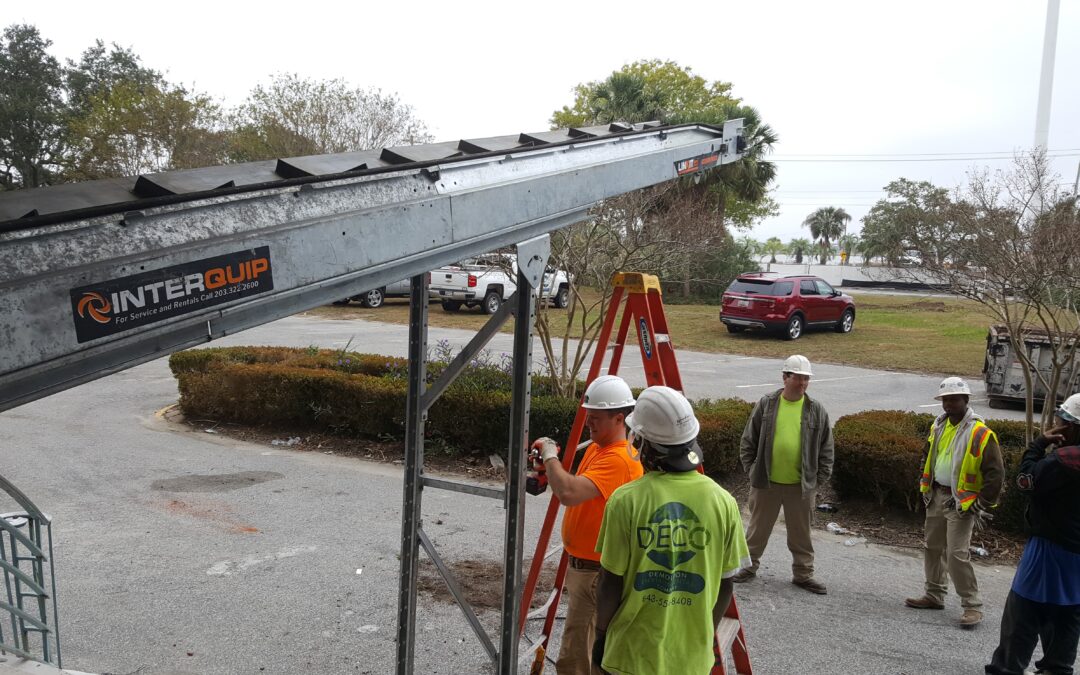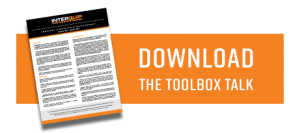Pictured in this demolition project is the EASIKIT modular conveyor. A team of conveyors was assembled on-site to withdraw material level by level from the building to the beds of dump trucks for removal.
We’re in the business of conveyors, so we know that when you use and maintain our conveyors properly, you’ll maximize their lifespan and assure worksite safety and efficiency. We’ve assembled this general guide for the safe operation, maintenance, and troubleshooting of belt conveyors. For additional guidance, visit the Resources section on our website to download and refer to the model-specific operation & maintenance manuals.
OPERATION
REMEMBER! You are feeding a moving belt, so feed accordingly and the conveyor will work very well. Overload and you will cause jamming breakdowns which in turn will cost time, money and safety! Keep the conveyor clean, particularly under and around the loading section.
MAINTENANCE
Routine maintenance checks are recommended at regular intervals depending on the frequency of use as well as the type and volume of material handled.
TROUBLESHOOTING
Before performing any conveyor inspection or troubleshooting, be sure to isolate and lock-off power supply! If you cannot lock the power supply, unplug the conveyor from the starter or transformer.
And if all else fails, contact the Conveyor Guys at InterQuip to get your equipment back up and running and keep your worksite safe! Call (866) 923-6579, drop an email to [email protected] or fill out the form below.


